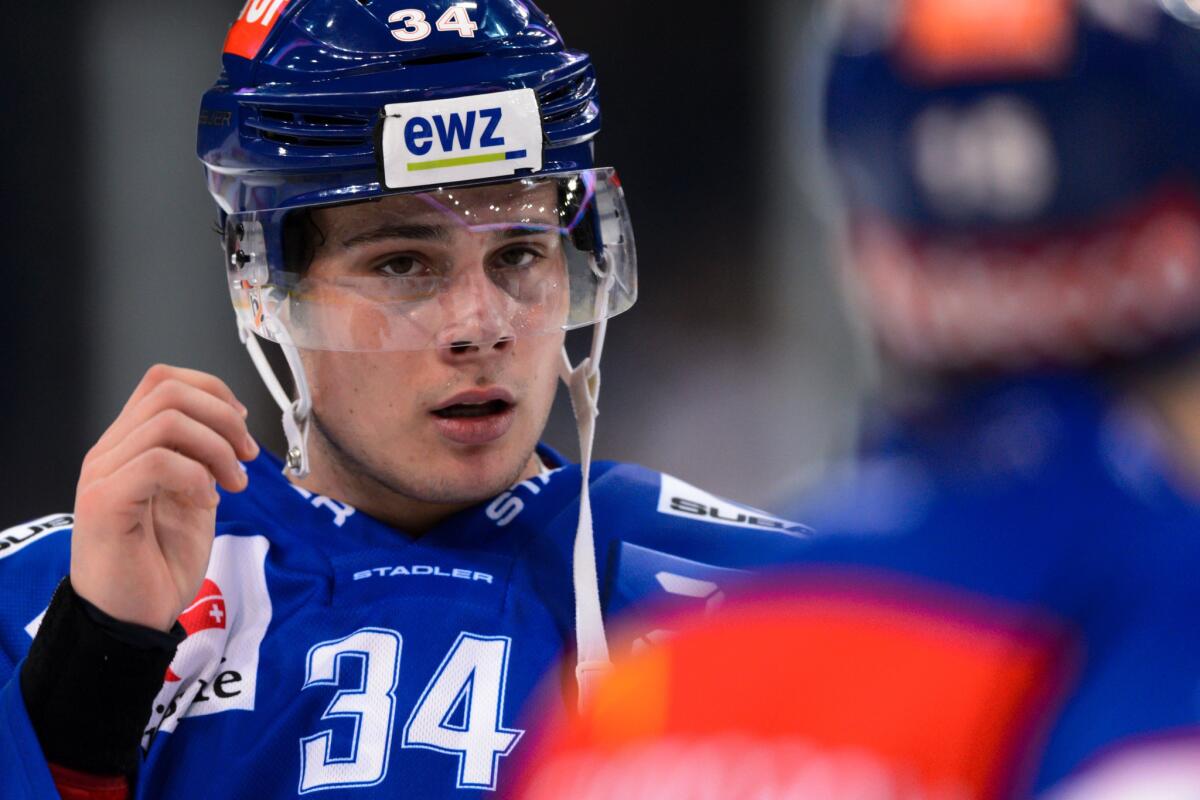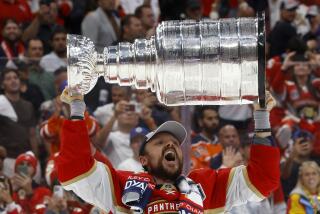Arizona teen Auston Mathews is expected to be the first pick in NHL draft

- Share via
A few days after the NHL expanded to the non-traditional hockey city of Las Vegas, a player from the non-traditional hockey city of Scottsdale, Ariz., is expected to be chosen No. 1 in the league’s annual entry draft.
Creative and powerful center Auston Matthews, whose career was inspired by the Coyotes’ move to Arizona, is all but certain to be picked first by the Toronto Maple Leafs on Friday, when the first round is held at the First Niagara Center in Buffalo, N.Y. Rounds two through seven will be conducted Saturday.
After Matthews, it’s likely to be a close call between Finnish wingers Patrik Laine and Jesse Puljujarvi, followed by American-born forward Matthew Tkachuk (son of former NHL standout Keith Tkachuk) and two-way forward Pierre-Luc Dubois of the Quebec Major Junior Hockey League. Winnipeg has the second pick, followed by Columbus, Edmonton and Vancouver.
The Ducks have the 24th and 30th picks in the first round. The Kings, who have traded their first-round pick two years in a row, aren’t scheduled to make a selection until the second round, at No. 51.
Martin Madden, director of professional/amateur scouting for the Ducks, believes Matthews, Laine and Puljujarvi stand above their peers. But he sees good depth beyond that trio.
“I think there’s probably 16 to 18 really strong first-round-value players and then the rest all the way to the second round, it’s a relatively deep second echelon of what I’d call second-round-value players,” he said. “Having two picks late in the first gives us flexibility both in terms of trying to move up or reassessing and moving down, if we so choose.”
The Kings’ draft approach has changed since their Stanley Cup success pushed their position later in the draft. But Mark Yannetti, their director of amateur scouting, said their mind-set is the same as it was when they chose Drew Doughty No. 2 in 2008 in terms of researching potential picks and discussing possible scenarios.
At 51, “there’s a potential for 20 to 30 players you might be looking at for that spot, especially if you’re going to try to move up or move down,” Yannetti said. “When we drafted Drew we watched Drew and four other players ad nauseum. I can’t tell you how many hours we spent watching those guys live or on tape. You can’t allocate that same focus scouting because there’s not enough hours in the day to do that with 40 guys. You still can’t lose the attention to detail, so it’s kind of a balancing act.
“I don’t like to use the word guesswork but it’s calculated probability. There is an analytic component to determine who may or may not be available at those spots. So you start adding some of that in to give yourself more of a focus group to narrow the numbers down.”
In that situation, the cliché of choosing the best remaining athlete is the best option. “We’ve gone away from the best player available only twice that I can remember in our tenure with L.A. It’s unfair to say who and when but it was early on in our tenure and the results were nothing short of disastrous in my opinion,” Yannetti said. “You don’t draft for need. It’s a scary thing to draft for need. Because, a, you may skip over a good player, and b, you may not have that need when they’re ready to play.”
Finding good players in later rounds also is vital. Yannetti said he has yet to experience a draft in which the Kings didn’t get someone from the fourth round onward who was able to play. “You’ll hear people on our staff say, ‘We’ve got to find the guy,’” he said.
Madden also loves to find those gems. He saw Josh Manson before the 2011 draft and wasn’t impressed, but another scout, Glen Cochrane, saw Manson later, after the youngster was moved from forward to defense.
“We didn’t have a pick in that sixth round, but Glen was so adamant this guy was a player and that he had the character and the athleticism to make it on defense,” Madden said. So the Ducks traded for a sixth-round pick and claimed Manson at No. 160, which has turned out to be a wise move.
“I think we need to be as excited about a kid we draft in the fifth, sixth, seventh round as we are about our early-round picks,” Madden said. “That’s how we build up through the organization.”
helene.elliott@latimes.com
Twitter: @helenenothelen
More to Read
Go beyond the scoreboard
Get the latest on L.A.'s teams in the daily Sports Report newsletter.
You may occasionally receive promotional content from the Los Angeles Times.






